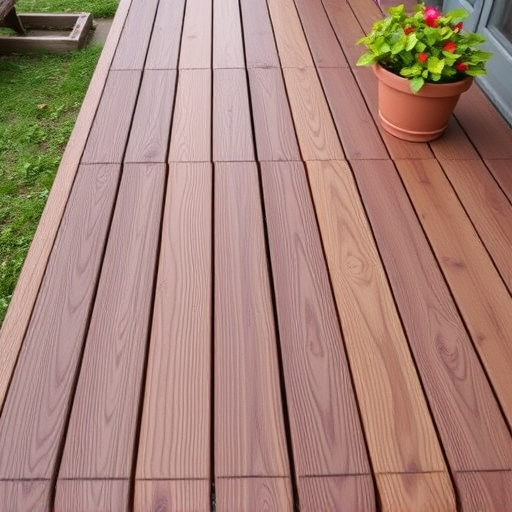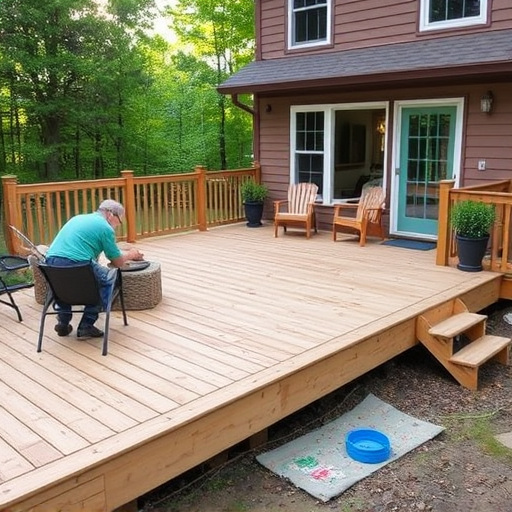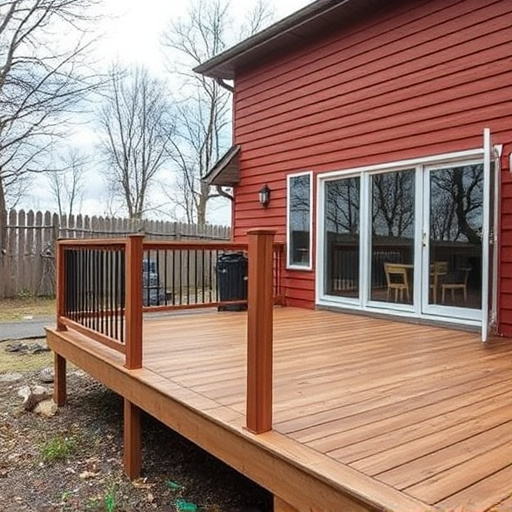Create a Pet-Safe Backyard Deck Area: Planning & Installation Guide
Creating a pet-friendly backyard deck involves balancing safety, comfort, and functionality with fea…….
In the quest for maximizing outdoor living, the backyard deck has emerged as a transformative element that bridges the interior and exterior of homes. This article delves into the multifaceted world of backyard decks, exploring their definition, global impact, economic significance, technological innovations, regulatory landscape, challenges, case studies, and future prospects. By the end, readers will gain a comprehensive understanding of this popular outdoor amenity and its role in enhancing quality of life worldwide.
A backyard deck is an elevated wooden or composite platform extending from a house’s exterior, offering a versatile space for relaxation, entertainment, dining, or simply enjoying the outdoors. Its core components include:
Historically, decks have evolved from simple wooden platforms to sophisticated outdoor rooms, reflecting changing lifestyle preferences and technological advancements in construction materials and design.
Backyard decks hold cultural significance across diverse regions, with their popularity driven by regional climates, architectural styles, and societal shifts towards outdoor living. Key global trends include:
The backyard deck industry is a significant contributor to the global construction and outdoor living market, with market dynamics influenced by:
According to a 2022 report by Grand View Research, the global deck market size was valued at USD 8.3 billion in 2021 and is expected to expand at a compound annual growth rate (CAGR) of 5.7% from 2022 to 2030. This growth is fueled by increasing disposable incomes, urbanization, and a growing preference for outdoor entertainment spaces.
Technological innovations have revolutionized backyard decks, offering enhanced comfort, safety, and entertainment options:
Backyard deck installations are subject to local building codes, zoning regulations, and safety standards, which vary widely across regions. Key considerations include:
Despite their widespread popularity, backyard decks face several challenges and criticisms:
Actionable Solutions:
In a high-rise apartment building in Manhattan, a transformed rooftop deck offers residents a serene urban oasis. Featuring a composite decking surface, the deck includes built-in seating areas, sun umbrellas, and solar-powered lighting. A green wall provides insulation and privacy, while integrated speakers create an immersive audio experience. This case study exemplifies how innovative design and technology can transform limited outdoor spaces into thriving urban oases.
Nestled among the majestic peaks of Aspen, this deck seamlessly blends indoor and outdoor living. Crafted from natural cedar, it boasts a sprawling seating area with comfortable lounge chairs, a dining table for al fresco meals, and a hot tub for relaxation. The deck’s design incorporates local materials and respects the surrounding natural landscape. This case study underscores the ability of well-designed decks to enhance and harmonize with their natural surroundings.
On the sun-kissed shores of Malibu, a beachfront property boasts an eco-friendly deck constructed primarily from recycled materials. The design incorporates solar-powered lighting, a rainwater harvesting system for irrigation, and native plant landscaping to minimize water usage. This case study highlights the growing trend toward sustainable decking practices and their positive environmental impact.
The backyard deck industry is poised for continued growth, driven by evolving consumer preferences and technological advancements:
Backyard decks have evolved from simple outdoor platforms to versatile, multi-functional spaces that significantly enhance quality of life. Through technological innovations, sustainable practices, and personalized design, decks continue to transform outdoor living, offering a place for relaxation, entertainment, and connection with nature. As global trends reflect a growing appreciation for outdoor spaces, the backyard deck’s future appears bright, promising to inspire creativity, foster community, and enrich lives worldwide.
Q: How much does it cost to build a backyard deck?
A: Costs vary widely depending on size, materials, location, and complexity of design. Basic wooden decks can range from $20 to $40 per square foot, while composite or high-end options can cost $50 or more.
Q: Are there any building codes I need to be aware of?
A: Yes, local building codes and zoning regulations govern deck construction. Contact your municipality’s building department for specific requirements in your area.
Q: How do I make my deck more accessible for elderly or disabled family members?
A: Consider low-maintenance materials, add ramps or lifts for higher decks, and incorporate features like grab bars and non-slip surfaces for safety and ease of use.
Q: What are some eco-friendly decking options?
A: Composite decking made from recycled plastic and wood fibers, as well as treated woods certified by the Forest Stewardship Council (FSC), offer sustainable alternatives to traditional decking materials.
Q: How can I make my deck more private?
A: Planting tall trees or shrubs around the perimeter, installing privacy screens, or incorporating natural elements like hedges or trellises with climbing plants can effectively enhance privacy.

Creating a pet-friendly backyard deck involves balancing safety, comfort, and functionality with fea…….

Designing a backyard deck garden combines functionality and aesthetics. Plant sun-loving flowers in…….

Transform your backyard into a modern oasis with a strategically designed backyard deck. Consider sp…….